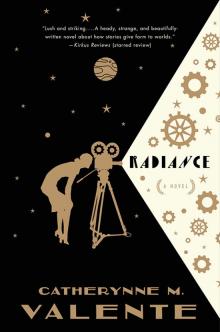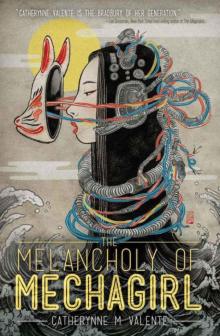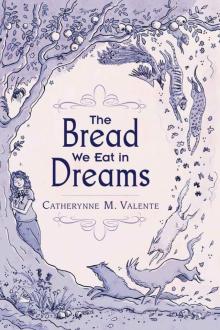


Cairo
Max Rodenbeck
While Egypt luxuriated, Europe was lurching to the end of a dark age. Beginning with the Synod of Toulouse in 1229, which established the network of spies and witch trials known as the Inquisition, the Catholic Church escalated persecution of heretics, Jews, and Muslims. Like the Jews of Switzerland in the Second World War, the 7,000 fortunate Jews of Fustat grew to dread the influx of refugees from across the Mediterranean. Not only were many of these newcomers uncouth, they were also destitute. They could not afford the tax of one to four dinars a head that Egypt’s rulers imposed on their non-Muslim subjects—a tax the local community would be obliged to pay on the immigrants’ behalf. A letter in the Geniza—sent from a citizen of Alexandria to the chief justice of Fustat’s Jews, Hananel Ben Samuel, and dated May 15, 1235—reveals anxiety over the bigger tax burden: “A boat has arrived from Marseilles after a voyage of twenty-five days. Moses, the parchment maker, who traveled on it—you know him—told us that a huge crowd of our coreligionists prepare to come. May God guard us from the troubles they cause!”
LIKE MEMPHIS in Herodotus’s time, Fustat in the eleventh and twelfth centuries was a city where races and creeds mingled peaceably on the whole. Aside from the constant influx of slaves, the crosscurrents of war and commerce and religious devotion brought waves of foreign immigrants. The Fatimid army, for example, was made up of Berber, Sudanese, and Turkish brigades. The palace guard, 10,000 strong according to the eleventh-century Persian traveler Nasir Khusraw, was a sort of Foreign Legion of mercenaries, with each corps wielding its national arms. Khusraw described the Fatimid court as a haven for political refugees. Lords and princes of the Maghreb, Yemen, Byzantium, Slavonia, Nubia, Ethiopia, and Georgia, he said, as well as sundry men of letters, received stipends from the caliph. “They live at court like ministers of state,” wrote Khusraw in his Safarnameh. “With nothing in particular to do they wander about, chat with each other, and retire to their quarters.” Four hundred years later, the Flemish traveler Joos van Ghistele described having met, among others in a few days at Cairo, a Christian renegade from Valencia who worked as a translator, a Prussian from Danzig employed as an officer in the sultan’s treasury, three Mameluke soldiers from Bordeaux, and a jeweler from his own native city of Ghent.
Because of its position on the route to Mecca, Egypt drew pilgrims from across Islam. Many, like the Tunisian-born scholar Muhammad Ibn Khaldun in the fourteenth century, ended up staying to study or teach in the well-endowed colleges of Fustat and Cairo. Al-Azhar, founded by the Fatimid caliph al-Mu‘izz, was the oldest of these. It maintained separate lodgings for Moroccans, Syrians, Turks, and Red Sea peoples. Christian and Jewish pilgrims, too, made the city a stopping place on the route to the Holy Land.
But it was above all trade that gave Egypt’s capital its international cast. The Italian port of Amalfi established a permanent delegation at Fustat in A.D. 996. King Roger II of Sicily, whose father had wrested their island kingdom from Fatimid control and who was so curious about Cairo that he sent the Arab geographer Abu Abdallah Muhammad al-Idrisi to report on its marvels, signed a trade pact with the Fatimids in 1143. Commercial treaties with Ceylon, Venice, Florence, and Genoa followed in Mameluke times, when the commerce in Eastern spices reached its height. So prosperous was a spice-trading guild known as the Karimis that they acted as lenders of last resort to the government itself. When a chief of the guild, Nasir al-Din Balisi, died in 1373, his sons inherited a trading network with agents in India, Yemen, Abyssinia, and Mali—as well as a legacy valued at a million gold dinars. Later, during Ottoman rule, Cairo was the linchpin of the international coffee business, importing the beans from Yemen and exporting them to Europe. Its famous luxury bazaar, Khan al Khalili, became a prosperous merchant colony of Persians and Turks.
In the barrierless world of medieval Islam it was easy for foreign Muslims to set up shop in the Egyptian capital. For infidels there were obstacles. The jizya—the tax on non-Muslims that was only abolished in the mid-nineteenth century—was a serious burden. Since its revenue dwindled over time as the proportion of Muslims rose, police grew stricter in checking Christians and Jews for annual certificates of acquittance. Without a tax certificate you could not travel. Families were held responsible for absent members. Nonpayment meant imprisonment.
The Geniza reveals, however, that Fustat’s minorities were troubled less by persecution than by the everyday concerns they shared with their Muslim neighbors, the major ones being the price of bread and the level of the Nile. Property deeds show that there were no ghettos in Fustat. Jewish-owned houses usually adjoined Muslim and Christian property, and Jewish merchants often had Muslim partners. Christians and Jews worked in a range of professions, from doctors and wine dealers—there was even a Street of the Winesellers in Muslim-ruled Fustat—to high posts in government and lowly crafts such as mat-weaving.
Being themselves from a Shi‘ite sect that most Muslims considered heretical, the Fatimids naturally sympathized with minorities. Repeated decrees declared the caliph’s beneficence, such as one of 1134 that promised “to guard those of the People of Protection who are included in this Kingdom and to cover them with the cloak of compassion and mercy.” The Fatimid government hosted feasts to mark Christian holidays. It not only paid the salary of the head of the Jewish community but also occasionally funded the building of churches and yeshivas. Although the wealthiest merchants and officials tended to be Muslims, Christians and Jews rose to prominence. Three generations of court physicians were Jewish. Numerous Fatimid wazirs were Christian, as were most officials in the caliphate’s complex fiscal bureaucracy.
Resentment at such apparent favor did bubble over at times, as in this verse composed by the Fatimid poet Rida ibn Thawb:
These days the Jews have reached their dream
They’re rich; they reign supreme….
O Egyptians, here’s my advice to you
Turn Jewish, since the heavens have turned Jew!
With the close of Fatimid rule in 1171, sentiments like these would express themselves with growing frequency in outright persecution. Still, Cairo’s minorities never endured the horrors perpetrated in contemporary Europe. No sect here—with the exception of the Fatimids’ own sect, the Ismaili Shi‘ites—was ever hounded to extinction like the Jews and Muslims of Spain or the Cathars of France.
“IN TIMES GONE BY, when stones threatened us, we wandered from place to place,” wrote Maimonides in his Responsa. “But by the mercy of God we have now been enabled to find a resting place in this city.” The city he meant was Fustat, yet in his time Fustat was declining. Before being overthrown, the Fatimid government—itself cozily ensconced a few miles off in well-defended Cairo—had torched outlying quarters for fear that unwalled Fustat would fall into the hands of the Crusaders. The famine of 1200 depopulated Fustat further. But it was the gravity of political power that exerted the strongest pull. The Fatimids’ successors had opened Cairo to commoners, while themselves moving to the towering Citadel they had built at its southeast corner. Business gravitated to the new seat of administration. Maimonides himself wrote to a friend complaining of his need to commute daily to the court of Saladin, where he—and his son after him—served as the sultan’s chief physician: “I do not return to Misr [al-Fustat] until the afternoon. Then I am almost dying from hunger. I find the antechambers filled with people, both Jews and Gentiles, nobles and commoners….I dismount from my animal, wash my hands, go forth to my patients, and entreat them to bear with me while I partake of some refreshment.”
As Fustat had absorbed Memphis, so Cairo subsumed Fustat. The common people’s name for Egypt’s capital—Misr—now applied to Cairo. Fustat became known as Misr al-Qadima or Old Cairo, which was exactly what Memphis had been called until its last traces vanished sometime in the fourteenth century. But Fustat did not disappear as completely as the pharaonic city. Instead it became a suburb of Cairo, a genteel rival to the bustling new port at Bulaq, a few miles north along the Nile.
Medieva
l Cairo was in fact a continuum of three cities. The great body of al-Qahira, placed well back from the Nile’s undulating floodplain, stood on the two legs of the northern and southern port suburbs. Saladin’s Citadel, with its palaces and government dīwāns and barracks and stables, formed the city’s head. It was at first separated from al-Qahira’s massive southern gate, Bab Zuwayla, by a mile of open land, but the grand mansions of courtiers and generals soon filled the space. Bab Zuwayla’s rounded towers lost their defensive function. They now straddled the Qasaba, the main commercial street running north to the gates of Bab al-Futuh and south toward Fustat. Al-Qahira eventually burst its walls to the north and west, too, sprawling into fields and toward the Nile at Bulaq.
WHETHER MUSLIM PILGRIMS, Jewish scholars, or Christian traders, medieval travelers agreed on one thing: the scale of Cairo was incomparable.
Khalil al-Zahiri, a Persian who saw the city in the fourteenth century, swore that it was ample enough to fit the ten largest towns of his own country. Writing in 1384, a Florentine traveler, Leonardo Frescobaldi, said that more people dwelled on a single Cairo street than in all of Florence. The number of vessels docked at the port of Bulaq, he claimed, was equal to three times the shipping in the harbors of Venice, Genoa, and Ancona combined. A generation later Emmanuel Piloti, a Cretan-Venetian whose silk and wine import business flourished at Cairo for twenty years, said the city was simply the largest in the world: “It has a circumference of eighteen miles, within which live people without number….It is in the very greatest prosperity of any city….” Cairo was four times the size of Venice, said another wandering European. Seven times Paris, parroted a third in 1483, who went on to say it took him twelve full hours to ride a horse around its periphery.
The Cairo that new arrivals saw must have seemed as strikingly urban, in its scale and density and sensibilities, as New York or Hong Kong do today. Its population may have reached half a million or more before the great plague of 1348, making it the biggest city the Western world had seen since the decline of Rome.*5 From a distance it was said to look like a lofty mountain. Buildings of ten and, by one account even fourteen stories towered over streets only a few yards wide and crowded “thick as locusts” with wayfarers. A single such tenement might house hundreds, even thousands of people: two old schoolmates, say the chronicles, met by chance after thirty years’ separation, only to find that they had lived all that time in the same building. Al-Maqrizi recorded the construction of an immense structure whose ground floor was a caravanserai and whose upper stories contained 360 apartments housing 4,000 tenants.
Land values rose so high that architects grew skilled at squeezing their buildings into odd-shaped plots, chamfering corners, retracting entrances, and angling towers and windows to maximize their exposure to the streets. Off the main thoroughfares such tactics were useless. With houses packed tight and leaning closely overhead, many alleys were dark enough for bats to fly in daytime. Fresh air itself was at a premium: the better houses were fitted with wind-catchers to scoop in the cool northern breeze. High ceilings, fountains, marble floors, and open courtyards with north-facing verandas completed a natural air-conditioning system. Such ingenuity was of no use to the poor, however. Numerous visitors remarked on the large numbers of homeless. “One sees many living on the city outskirts in tents, in pavilions, in holes and wells,” wrote Joos van Ghistele in 1483. “For the lack of dwellings they cannot live in the city.” This was despite the fact that rent for a simple house could be as low as a few dinars a year—and as high as 800 for a stately mansion on a prime site in twelfth-century Cairo.
The city’s great size tested medieval logistics in the extreme. Cairo’s distance from the Nile made the supply of water problematic. Quenching its thirst, reported al-Maqrizi, required the constant labor of some 10,000 water-bearers. Their fleet of donkeys and camels plied ceaselessly between the Nile and the city to fill its private cisterns and public fountains by subscription. A similar number of itinerant caterers provided hot food, because the high cost of fuel in unforested Egypt meant that few could afford their own kitchens. Instead, Cairenes bought grilled lamb from trays carried on the turbaned heads of public stewards, or roast chickens that had been reared in incubated batteries—a technology that never failed to impress European visitors. (An interesting resonance: Ptolemaic records from the third century B.C. show that public lentil soup kitchens did a roaring trade at Memphis.)
Al-Maqrizi counted 12,000 shops on the Qasaba alone,*6 and 87 separate markets in the city as a whole. On the outskirts these traded in general merchandise, but toward the city center specialization was the rule. Boutiques selling inscribed ivory combs clustered near the Mosque of al-Azhar. Next door was the market for costly Siberian sable, lynx, ermine, and squirrel furs. Arms, from laminated Khorrasani bows to chain mail to gold and silver inlaid swords, were sold between the mosques of Sultan Hasan and al-Maridani. The Bab Zuwayla—the former southern gate of Fatimid Cairo which had been overtaken by urban sprawl so that it now marked the symbolic heart of the city—itself hosted food stalls for sweets and a little market for musical instruments that was said to be a meeting place for libertines. Markets toward the northern gates of Bab al-Futuh and Bab al-Nasr furnished such things as saddlery and cloth, songbirds, and, of course, slaves.
At least until the introduction of plantation slavery in the New World, the Cairo market was unrivaled in the quantity and variety of its human merchandise. Brought by caravan from the Sudan, Arabia, Syria, and Libya, and by ship across the Red Sea and the Mediterranean, thousands of slaves—up to 10,000 a year even in the 1860s—changed hands here. Most were destined for domestic servitude in the city itself. Yet, aside from one slave uprising in the late fifteenth century, when several hundred stableboys revolted, fled across the river to Giza, and elected their own mock sultan and court, there is no evidence that the institution of slavery here was ever as intolerably cruel as in the Americas. Slaves were allowed to own property. It was not unusual for them to accumulate great fortunes: on her death in A.D. 1024 one slave girl of a Fatimid prince left a legacy valued at 400,000 gold dinars. Cairene merchants commonly shipped goods in the care of trusted slaves, and posted them as agents in far-off ports. While children born of concubines were automatically free, masters often liberated their slaves because doing so was considered an act of commendable piety.
Prices in the fifteenth century ranged from ten dinars for a serving maid to several thousand for the handsomest swordsman or shapeliest dancer (which compares sadly with the 30,000 dinars that Sultan al-Nasir Muhammad blew on a magnificent horse in 1320). Among Mamelukes—boy slaves of good soldier stock—the most prized were fierce Tatars (typically 140 ducats a head, says Emmanuel Piloti), then Circassians, then Greeks, followed by Albanians, Slavs, and lastly Serbs—a snip at seventy ducats apiece.*7 Seekers of concubines enjoyed a similarly wide choice. Abyssinian girls were prized for the reputed hotness and snugness of their “pearlboxes of ruby depth,” by one randy Turk’s account. Buyers with other tastes could pick from narrow-eyed Mongols to flaxen-haired Caucasians. But caution was advised: dealers dyed blond hair black because it fetched a better price.
Cairo expressed its merchant savvy in other ways. In 1324, 500 slaves, each bearing a tube of gold coins weighing 500 mithqals (about five pounds), heralded the arrival of Mansa Musa, king of Mali, bound on the pilgrimage to Mecca. Their heavy burden proved to be the African sovereign’s small change: a hundred pack camels followed, every one loaded with three kantars—about 300 pounds—of the precious metal. Yet so thoroughly was Mansa Musa fleeced at Cairo that on his return from Mecca he was obliged to borrow 50,000 dinars from an Egyptian spice merchant.
Twelve years after Mansa Musa’s visit, by which time the price of gold had yet to recover from his flooding of the market, Cairo shopkeepers still boasted of how they had milked the pious potentate and his train. “One of them might buy a garment for five dinars when it was not worth one,” Ibn Fadlallah al-Umari, a Syrian tra
veler, was told. “Such was their trustfulness that it was possible to practice any deception on them.” Another chronicler confirmed the account. The Africans, he related, thought their money was inexhaustible. But they were astounded “at the ampleness of the country and how their money had been used up, so they grew needy and resold what they had bought at half its value.” Back beyond Timbuktu, said al-Umari, Cairo’s greed had so tarnished its reputation that were the most learned doctor of religious sciences to confess that he hailed from that city, the Malians would treat him with contempt.
IF CAIRO ITSELF was splendid, its court was nothing less than magnificent. Impregnable walls that stretched nearly two miles in circumference enclosed a veritable city inside the Citadel. Its mosques and markets vied for space with palaces and prisons, arsenals and stables, and the treasury, royal mint, and Hall of Justice. In the fourteenth century, under the Mameluke sultan al-Nasir Muhammad, the Citadel’s kitchens turned out some twenty-five tons of food a day, and for one splendid banquet served up 3,000 sheep, 600 cows, and 500 horses while consuming a hundred tons of sugar for the desserts and sherbets.
Aside from its vast staff of state officials, the castle housed the sultan’s two “families”—his slave army and his army of wives and concubines and children. Each was meticulously chaperoned by a liveried and fiercely hierarchical corps of eunuchs. The Northern Enclosure quartered the royal Mamelukes. These youths, whom the sultan’s agents would have selected from the finest Turkish, Mongol, and Slavic stocks, lived here in twelve barracks, each of which was said to have a capacity of 1,000 men. Secured out of sight behind the Southern Enclosure’s Gate of the Veil, meanwhile, were the five Noble Dwellings where the sultan’s harem lived. Al-Nasir Muhammad’s four legal wives each maintained a household of her own, complete with children and slave girls. The fifth great hall was reserved for his 1,200 concubines.














